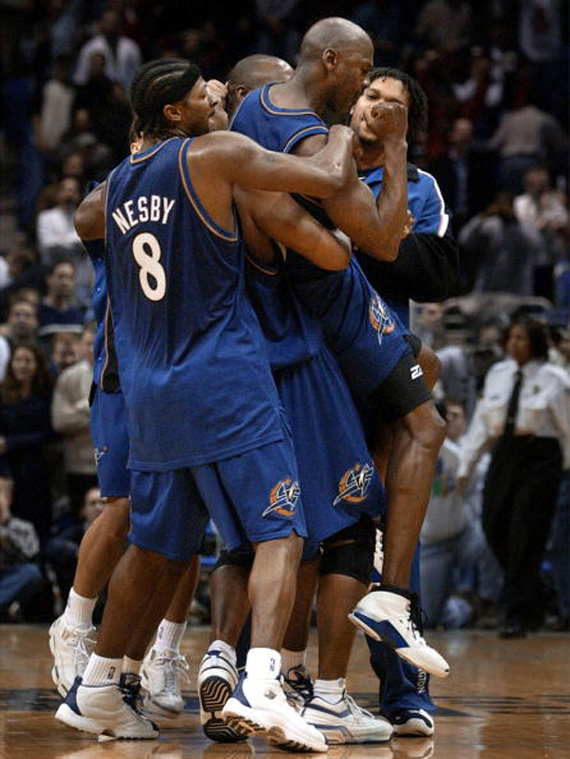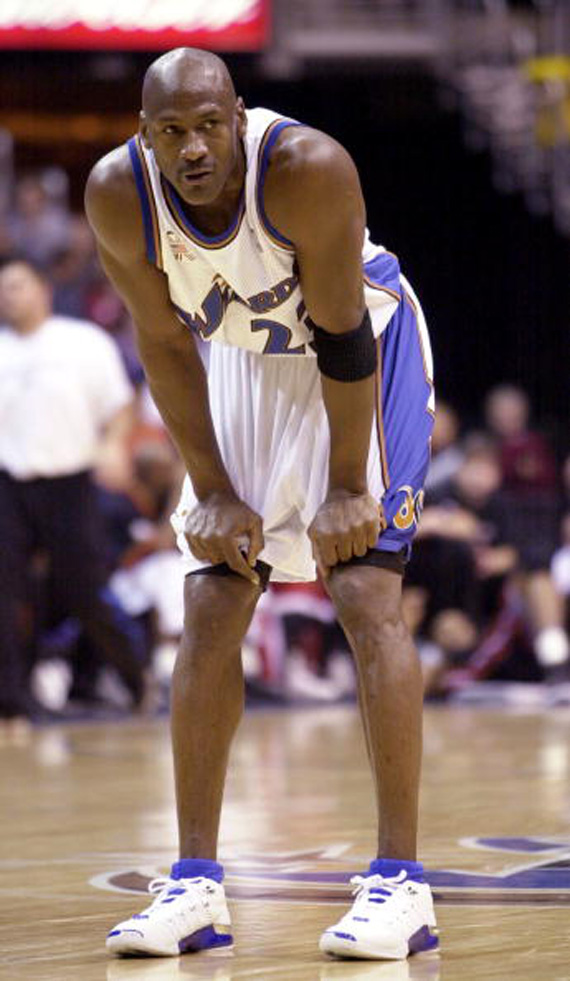
He’s Baaack! That was the general headline across the nation when Michael Jordan announced his return to the NBA, fueled by his passion for competition and urged by his love for the game. Michael made his season debut at Madison Square Garden, where he displayed his older form by tallying 19 points, 6 assists, 5 rebounds, and 4 steals. It only took Michael eight more games to break the 40-point mark, scoring 44 against the Utah Jazz, and he followed that up with a 51-point performance against the Charlotte Hornets. While Michael dazzled the crowd with his amazing performances, the Wizards, as a team, weren’t very good; the roster was filled with young, raw talent clearly in its rebuilding years, and the 2-9 start to the season was proof of that. But Michael, who is also acclaimed for his ability to improve the performance of those around him, led the young team to an astounding 20-game span in which the Wizards won sixteen games. Despite not being an elite team, the Wizards were undoubtedly the biggest fan draw in the NBA, selling out every Home game and filling arenas around the nation during road trips. Michael played just sixty games that season (cut short by injury), leaving the Wizards with a 30-30 record with twenty-two games to go.
Michael was also voted as a starter for the 2002 Eastern Conference All-Star Team; his mere presence outweighed that of the entire roster on both sides, and the All-Star Game festivities were heightened in celebration for Michael’s return, with a live performance by Mariah Carey . Of course, the highlight of Michael’s 13th All-Star Game performance was a missed slam-dunk that he clunked off the back of the rim during a solo fast-break, leaving the entire crowd and Michael himself in playful laughter. Other highlights of that season included a game-winning buzzer beater, which Michael immediately followed with his fist raised in the air, and perhaps his greatest blocked shot of his career when he pinned a Ron Mercer lay-up against the backboard. Michael’s career was rife with ups and downs, and his first season with Wizards was no different; Michael Jordan would openly criticize his teammates – particularly Kwame Brown, the 1st overall pick of the 2001 NBA Draft – leading to some minor tension in the locker room. This was nothing new for Jordan, as he was also remembered for berating teammates in front of other players during his days as a Chicago Bull.
During his first season with the Washington Wizards, Michael Jordan wore the Air Jordan XVII – the seventeenth Air Jordan shoe in the Legacy. The XVII was designed with Michael’s older, post-Bulls era persona in mind by infusing a number of elements that defined Michael after the game of basketball. The overall design of the Air Jordan XVII was inspired by Jazz music, with minute graphics of musical notes etched into the upper shroud of the shoe. The outsole traction was again designed to mimic a golf course, and the shoes came packaged in a suitcase – a representation of Michael’s role as businessman. Four colorways were released; a White/College Blue-Black colorway, which Michael wore during Home games, a White/Black croc-skin version with a copper ‘bumper’, a Black/Metallic Silver version, and a Bulls-specific White/Varsity Red. The 2001-02 season was also one in which Michael frequently wore low-tops – particularly a White/University Blue and a White/Royal Blue PE. Arguably the most popular of the Lows was the ‘Lightning’ colorway that MJ wore during the All-Star Game. Continue reading for a full visual recap of the Michael Jordan Through The Years: Air Jordan XVII, and stay tuned to Sneaker News for the next chapter of this great Jordan feature.




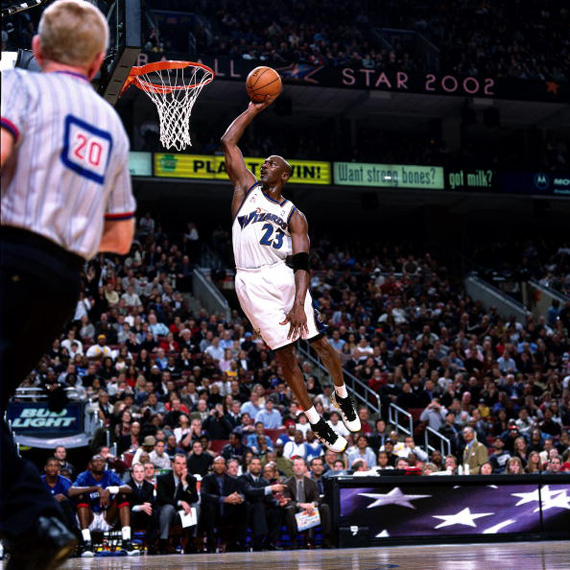


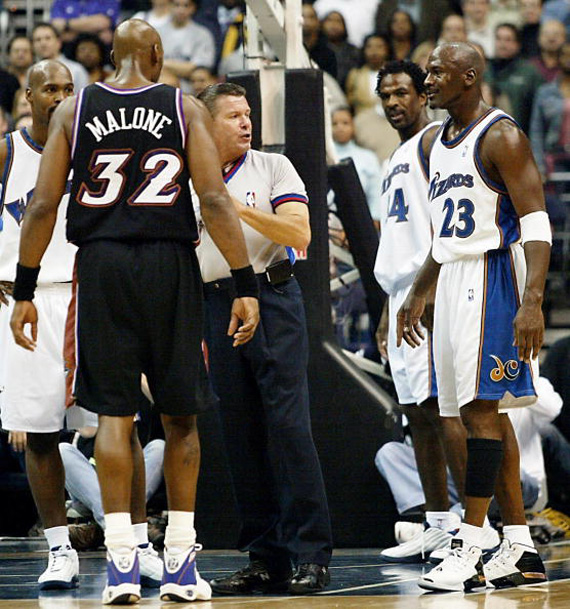

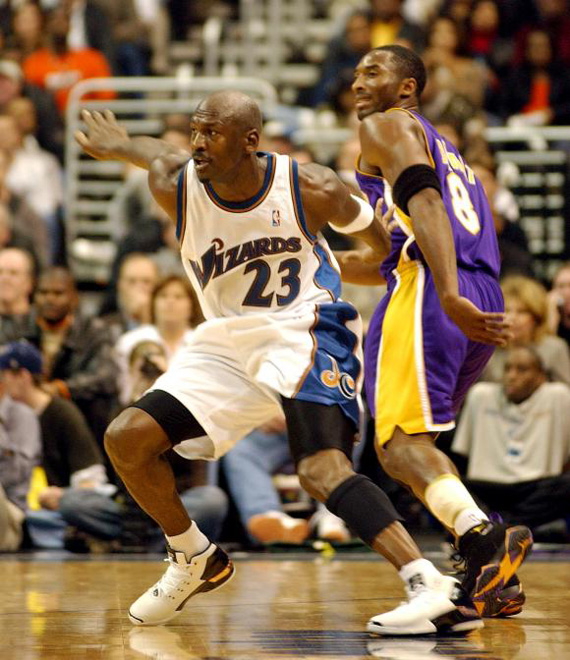
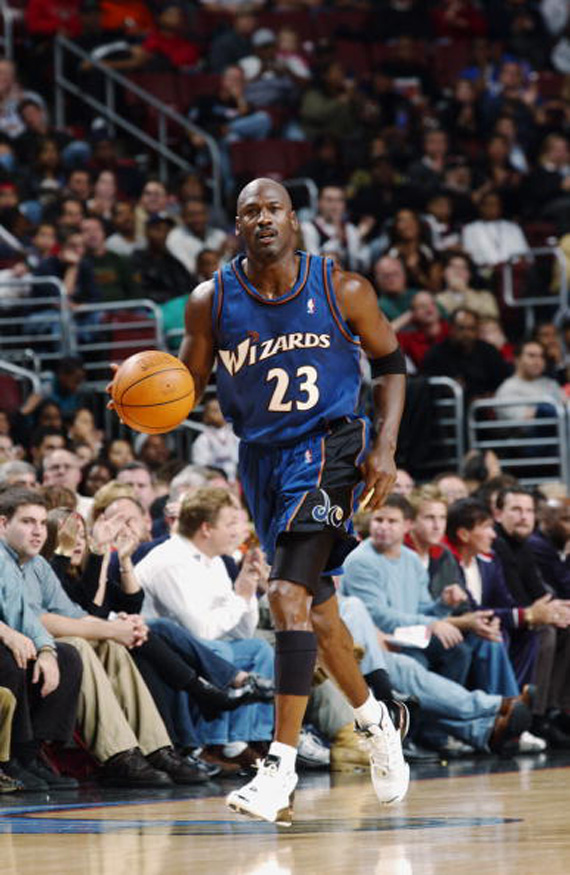




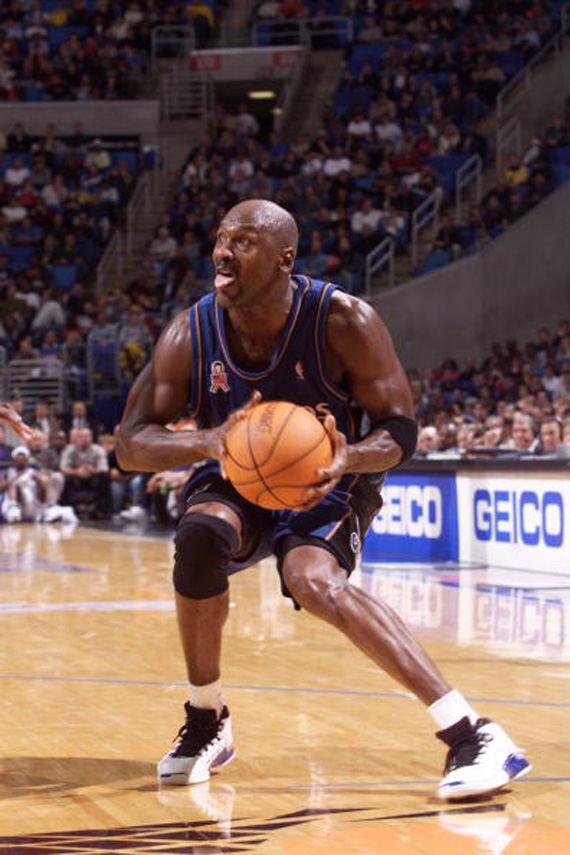












https://www.youtube.com/watch?v=[youtube]http://www.youtube.com/watch?v=IQJprZGr5XI[/youtube]






